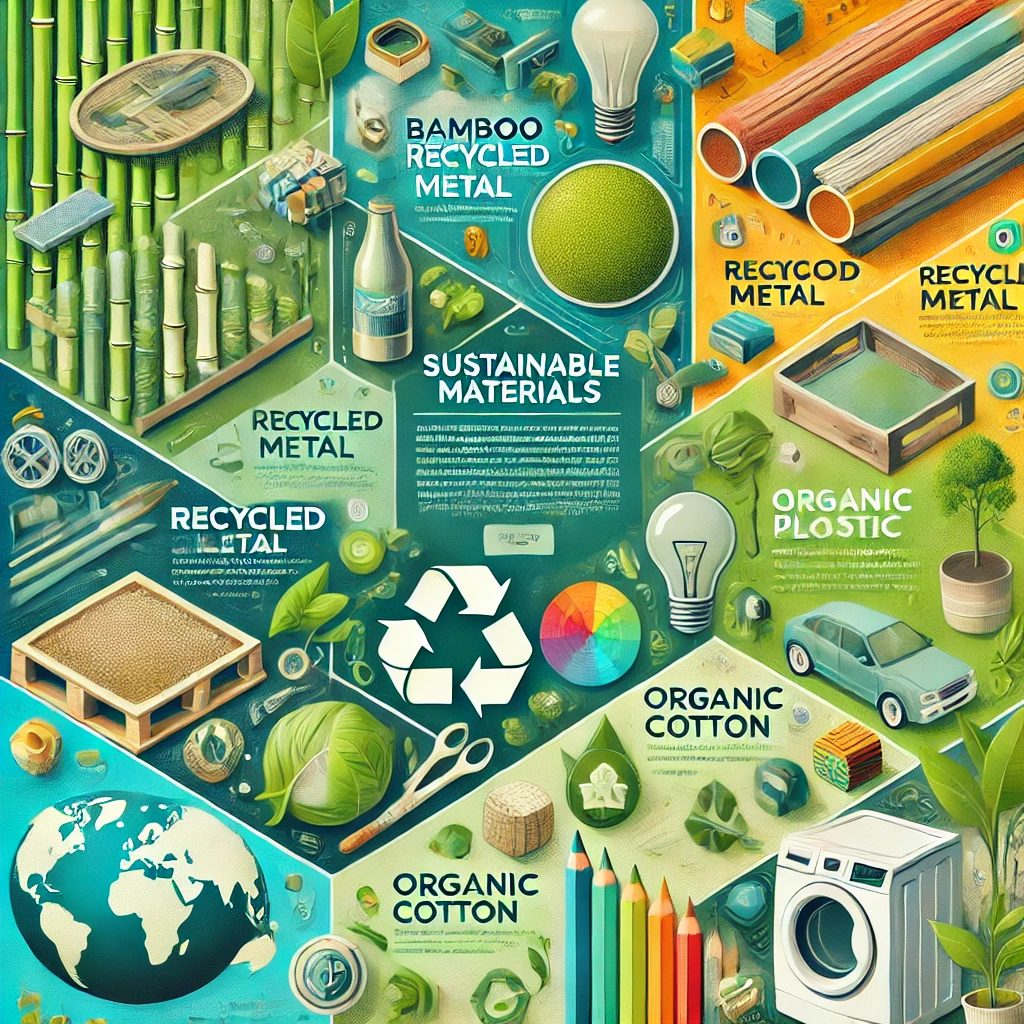In today’s world, the conversation around sustainability has never been more critical. One of the key components of this dialogue is sustainable material. These are materials that, through their entire lifecycle, have minimal impact on the environment. From production to disposal, sustainable materials are designed to be as eco-friendly as possible, helping to conserve natural resources and reduce pollution.
What Are Sustainable Materials?
Sustainable materials are those that are sourced, produced, and disposed of in ways that minimize their impact on the environment. This includes using renewable resources, reducing energy consumption during production, and ensuring that the materials can be reused or recycled at the end of their lifecycle. Some common examples of sustainable materials include bamboo, recycled metals, and biodegradable plastics.
Why Choose Sustainable Materials?
Choosing sustainable materials is more than just an environmental statement; it’s a practical decision that benefits both the planet and the people. Here’s why:
- Environmental Protection: Sustainable materials help reduce carbon footprints and minimize pollution. Bamboo, for example, is a popular sustainable material because it proliferates and requires less water than traditional timber.
- Economic Benefits: Many sustainable materials are cost-effective. Recycled metals, for instance, often cost less than newly mined metals. Additionally, sustainable practices can lead to long-term savings by reducing waste and energy consumption.
- Health Benefits: Materials like organic cotton and non-toxic paints are better for human health, reducing exposure to harmful chemicals.
Types of Sustainable Materials
Understanding the various types of sustainable materials can help in making informed choices. Here are some of the most commonly used sustainable materials:
1. Bamboo
Bamboo is a versatile and fast-growing plant that has become a symbol of sustainability. It can be used for everything from flooring to clothing. Bamboo is not only durable but also highly renewable, as it can grow up to three feet in a single day.
2. Recycled Metal
Using recycled metal reduces the need for resource-intensive mining. Metals like aluminum and steel can be recycled indefinitely without losing their quality, making them ideal sustainable materials.
3. Cork
Cork is harvested from the bark of cork oak trees, which can be done without harming the tree. This makes cork a renewable resource. It’s also biodegradable and can be recycled, making it a great sustainable material for flooring and other applications.
4. Recycled Plastic
While plastic is often seen as an environmental villain, recycled plastic can be a sustainable material when used correctly. It reduces the need for new plastic production and keeps plastic waste out of landfills and oceans.
5. Organic Cotton
Traditional cotton farming is highly water and pesticide-intensive. Organic cotton, on the other hand, is grown without synthetic pesticides or fertilizers, making it a more sustainable option for textiles.
How to Identify Sustainable Materials
Identifying sustainable materials can sometimes be challenging. Here are a few tips to help you determine if a material is truly sustainable:
- Check Certifications: Look for certifications from recognized organizations, such as the Forest Stewardship Council (FSC) for wood products or the Global Organic Textile Standard (GOTS) for textiles.
- Research the Manufacturer: Companies committed to sustainability often have detailed information about their materials and practices on their websites. Transparency is a good indicator of genuine sustainability.
- Consider the Lifecycle: Evaluate the entire lifecycle of the material, from production to disposal. Sustainable materials should have a minimal environmental impact at each stage.
The Future of Sustainable Materials
The future of sustainable materials is bright, with continuous advancements in technology and growing awareness about environmental issues. Here are some trends to watch:
Innovative Sustainable Materials
Researchers are constantly developing new sustainable materials. For example, mycelium, a type of fungus, is being used to create biodegradable packaging and even building materials. Mycelium proliferates and can be molded into various shapes, offering a promising alternative to conventional plastics and foams.
Circular Economy
The concept of a circular economy, where materials are reused and recycled indefinitely, is gaining traction. This approach reduces waste and maximizes resource use, making it a key strategy for sustainability.
Increased Consumer Demand
As more consumers become aware of the environmental impact of their choices, the demand for sustainable materials is expected to rise. This shift in consumer behavior is encouraging businesses to adopt more sustainable practices and materials.
Government Regulations
Governments around the world are implementing stricter regulations to promote sustainability. These regulations often include incentives for using sustainable materials and penalties for environmentally harmful practices.
Challenges in Adopting Sustainable Materials
While the benefits of sustainable materials are clear, some challenges need to be addressed:
- Cost: Some sustainable materials can be more expensive than their conventional counterparts. However, as demand increases and production processes improve, costs are expected to decrease.
- Availability: Not all sustainable materials are widely available. This can make it difficult for consumers and businesses to make sustainable choices.
- Education and Awareness: There is still a lack of awareness and education about sustainable materials. Increasing public understanding is crucial for the widespread adoption of these materials.
Conclusion: Embracing Sustainable Materials
Embracing sustainable materials is a crucial step towards a more sustainable future. By understanding the benefits, types, and identification methods of sustainable materials, we can make more informed choices that benefit both the environment and society.
Whether you’re choosing bamboo flooring for your home, opting for recycled metal in construction, or selecting organic cotton for your clothing, every choice matters. Sustainable materials not only help reduce our environmental footprint but also promote healthier, more resilient communities. As we move forward, the continued innovation and adoption of sustainable materials will play a vital role in building a greener, more sustainable world.

